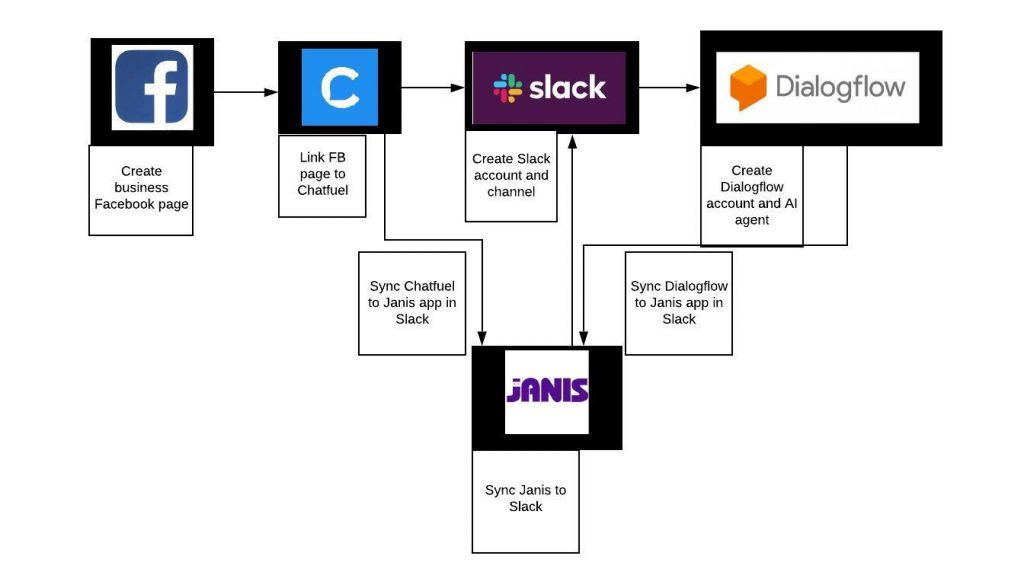Project Overview
This project identified a gap in a chatbot development platform Chatfuel. In order to increase accuracy, efficiency, and effectiveness, Machine Learning (ML) was implemented into Chatfuel which created a more intelligent, intuitive chatbot, better-abled to understand the context and needs of users, thereby increasing the user experience. Information on this page provides links to the full experience report, as well as chatbot demonstrations from the finished product. The breakdown of what this project consisted of is provided.
What is the relevance between technical communication and chatbot development?
The discipline of technical communication has evolved into the role of the content creator, manager, and improver on a myriad of digital platforms and interfaces. The technical communicator is a key player in the design of chatbots by organizing and rationalizing content, in order to create conversational workflows to meet user needs. While the technology that has been designed is very valuable, it is of little use when failing to effectively meet user needs by accurately answering questions and correctly understanding multiple intents and contexts.
How do I enable multiple platforms to sync and interface?
In completing this project, Dialogflow was the Natural Language Processing (NLP) platform with Machine Learning (ML) built-in that was implemented into Chatfuel, in order to improve the design of the chatbot. In order to implement Dialogflow into Chatfuel and allow the two platforms to communicate, the two systems had to be synced together. This process was accomplished by the use of Janis (an AI assistant API). By adding Janis to Slack (a project management tool), this API was synced to both Dialogflow and Chatfuel, allowing communication to take place.

What is JSON?
While Janis synced these two platforms together, allowing the interface to occur, a language that all platforms understood was necessary in order for the implementation to be successfully executed, creating the data exchange between platforms. For this reason, JavaScript Object Notation (JSON) was vital to the success of the project. JSON was the standard file format that both Chatfuel and Dialogflow understood, allowing data to be exchanged.

How do I know the implementation was a success?
Once the implementation was complete, a usability test on the updated chatbot was completed. The results of this study were compared to a usability study from a similar product that was not ML capable. The results seen in the following figure show the measurable results of the increased accuracy, efficiency, effectiveness, and increased user experience.

Skills Gained
The skills gained from this project include an understanding of Natural Language Processing (NLP), Machine Learning (ML), as well as conversation design skills in creating conversational flows in the creation and management of chatbot technology. Additionally, the ability to learn new technologies with little to no guidance on this project was present. Analysis and research skills were used in performing the usability study and comparative analysis. The advantage I have to others in this type of role is that in addition to the ability to understanding chatbot technologies and functional AI knowledge, I have technical communicator skills that enable me to organize and rationalize content, in order to create excellent conversational flows to meet a myriad of user inputs, contexts, and needs. These skills will create and manage a chatbot product that will continue to enhance the computer-human interaction in chatbot technology.